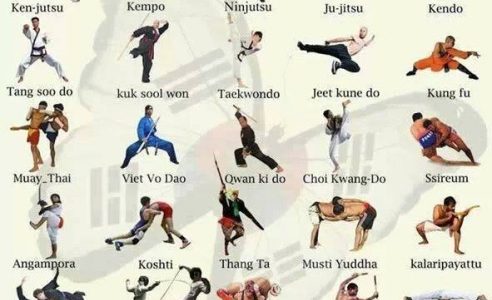Debunking The Various Fighting Style Designs: From Martial Arts To Taekwondo
Debunking The Various Fighting Style Designs: From Martial Arts To Taekwondo
Blog Article
Article Written By-Borch Clay
Are you tired of feeling overwhelmed by the substantial globe of martial arts? With numerous designs to pick from, it can be very easy to get lost in a sea of punches, kicks, and strange names. Yet anxiety not!
martial arts to learn at home will certainly demystify the different martial arts designs, taking you on a journey from the effective strikes of Martial arts to the dynamic kicks of Taekwondo. Get ready to discover the beginnings, techniques, and approaches behind these ancient art forms.
So, tighten your belt and prepare to start an enlightening expedition right into the exciting world of fighting styles.
Origins of Martial Arts Styles
The beginnings of fighting styles styles can be traced back to old people and their demand for protection and fight techniques. Throughout background, various societies developed their very own unique techniques of combating, each with its own collection of methods and viewpoints.
In China, as an example, fighting styles designs such as Kung Fu and Tai Chi were developed as a way of self-defense and enhancing physical and psychological wellness.
In Japan, the samurai warriors created designs like Karate and Judo, concentrating on self-control, accuracy, and proficiency of the body.
In a similar way, in Korea, Taekwondo emerged as a martial art stressing high kicks, rapid activities, and mental fortitude.
These early civilizations laid the foundation for the diverse array of martial arts designs that exist today, each with its own abundant history and cultural relevance.
Methods and Training Approaches
To grasp fighting styles styles, specialists have to find out various strategies and training methods.
Strategies are the details motions and actions utilized in battle, such as strikes, kicks, throws, and obstructs. kung fu adults fighting styles designs have their own unique collection of strategies that specialists must master with extensive training.
Training methods differ depending upon the design, but they usually involve a mix of physical conditioning, drills, sparring, and forms.
Physical fitness is essential to develop toughness, adaptability, and endurance. Drills assist professionals refine their techniques and boost their speed and precision.
Sparring permits specialists to exercise their strategies in a controlled, reasonable atmosphere. Kinds, also called kata, are deliberate series of movements that aid practitioners establish muscle memory and focus.
Approaches and Concepts
Exploring the approaches and concepts of martial arts styles can offer you with a much deeper understanding of your picked technique. please click the following web site has its own one-of-a-kind viewpoint and collection of leading principles that form the way it's practiced.
For instance, Karate emphasizes self-control, respect, and self-discipline. It instructs professionals to concentrate their body and minds, allowing them to safeguard themselves while keeping a feeling of internal peace.
On the other hand, Taekwondo puts a solid emphasis on rate, dexterity, and adaptability. Its principles are rooted in the tenets of courtesy, stability, determination, self-constraint, and unbeatable spirit.
Conclusion
Since you've explored the origins, strategies, and viewpoints of numerous martial arts designs, you have a deeper understanding of these old self-controls.
Visualize a young karate pupil, experimenting steady resolution and focus, breaking through boards with an effective strike.
Their trip showcases the commitment and strength called for to understand a martial art, advising us that with technique and willpower, anything is possible.
